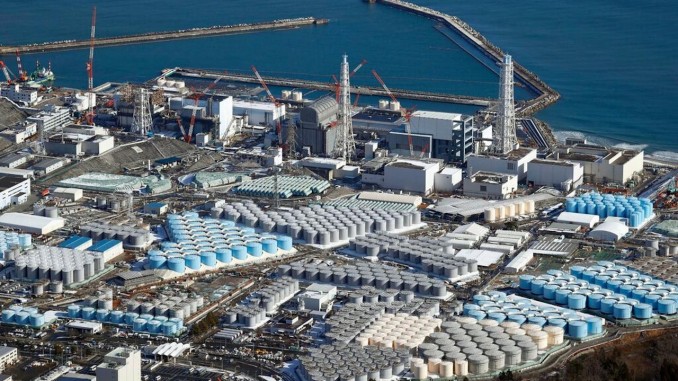
Japan announced on Tuesday, April 13, that it intends to release more than one million tons of treated wastewater from the Fukushima nuclear power plant into the Pacific Ocean. On March 11, 2011, three of the four nuclear reactors at the Fukushima plant experienced meltdowns in the aftermath of an earthquake and tsunami. Molten fuel debris burned through steel containment vessels and into the bases of the reactor buildings. Since then, water has been pumped by workers through the remains to prevent the debris from overheating and leading to more damage. All the contaminated water has also been collected: It fills more than 1000 steel tanks within the Fukushima campus.
Now they are running out of space to store the water. The release of this cooling water into the Pacific is set to begin in two years, and would take place over decades. The plant’s operator, Tokyo Electric Power [Tepco], and government officials say tritium, a radioactive material that is found in nature, but also a byproduct of the production of nuclear energy, cannot be removed from the water. They add that while it is radioactive, it is not harmful in small amounts, assuring the public that all other radionuclides in the water can and will be reduced to levels allowed for release, and the tritium will be at such low levels as to imitate nature.
How trustworthy are Yoshihide Suga, the prime minister of Japan, and Tepco, the Japanese Electric Power company? Recently, after the February 14 earthquake hit Japan this year, the Associated Press noted that Tepco, “has repeatedly been criticized for cover-ups and delayed disclosures of problems.” The Washington Post wrote on March 6, 2021 that, “For years, Tepco claimed that the treated water stored at the plant contained only tritium, but data deep on its website showed that the treatment process had failed.” And further that, “In 2018, [Tepco] was forced to acknowledge that 70 percent of the water is still contaminated with dangerous radioactive elements — including strontium-90, a bone-seeking radionuclide that can cause cancer — and will have to be treated again before release.” The answer is clearly, “not trustworthy”.
Today we have ample evidence that nuclear energy plants are unsafe, from the Three Mile Island accident in 1979, to the horrific meltdown in Chernobyl in 1984, and the Fukushima disaster in 2011. In Fukushima only one disease study of the population was done after the disaster, a screening for thyroid cancer in 380,000 local children under the age of 18. After five years, in January 2018 the journal Thyroid reported 187 cases. According to Joseph Mangano, the director of the Radiation and Public Health Project, typically a population of 380,000 children would have 12 cases in five years.
Nuclear power plants the world over regularly release water containing trace amounts of tritium into the environment under monitored and controlled conditions. Should this make us feel better? The fact is that without nuclear power plants we wouldn’t have to be asking ourselves these questions. This manner of producing energy needs to be relegated to the past.
There will not be any “good” solutions to the problem of contaminated cooling water from this nuclear power disaster. But demanding that the government and power companies tell the truth, pushing back against their cover-ups, protecting the animal and plant life in the ocean that ingests and accumulates industrial waste, and then concentrates it as it moves up the food chain, is essential.




